On the whole, the elemental ingredient that distinguishes a dwelling being from an inanimate object is called Prana.
For simplicity, Prana is typically known as the “breath” or the “air we inhale.” Nevertheless, for a yogi, understanding Prana goes far past simply breath.
Yogis view the breath as a instrument a method to regulate, develop, or redirect Prana. This science of working with Prana is called Pranayama.
What’s Prana?
In keeping with the yoga custom, Prana is the important vitality within the physique that retains us alive. As a result of it sustains life, Prana is commonly referred to as the “important life pressure” or “important vitality” of a dwelling being.
Solely when Prana flows steadily can the voluntary and involuntary capabilities of the physique happen. Respiratory, digestion, heartbeat, strolling, speaking, and even pondering all are ruled by the motion of Prana.
Nevertheless, Prana will not be restricted to dwelling beings. It additionally exists in inanimate objects, permeating all types of matter.
To supply a broader view, the Vedic scriptures describe Prana as the ability of the Supreme Self that manifests all the universe and pervades all of creation.
The literal That means of Prana
In Sanskrit ‘Prana’ is spelled as ‘Praan‘ and its energy known as ‘Praan shakti‘.
The Sanskrit time period ‘Praan‘ is derived from the prefix ‘Pra‘ means ‘brings forth‘ and root ‘an’ means ‘motion‘. Prana means the pressure “which brings forth the motion”. And Prana Shakti is all in regards to the manifestation which Prana brings; like life, matter, ideas, and so on. It’s the transformative pressure that converts vitality into matter and matter into vitality.
The pressure which makes us in a position to breathe, provides us a capability to suppose, lets us transfer physique limbs freely is the pressure of Prana. Furthermore, each different motion that’s taking place in all of the objects of this universe is the pressure of Prana. That is why Prana known as the common pressure that sums up the overall of all forces within the universe.
To know the that means of prana, Swami Vivekananda explains Prana fantastically in his work. In keeping with him;
Originally of creation, there may be solely this Akasha (house). However by the ability of Prana, Akasha (house) manufactured into this universe.
Swami Vivekananda
Supply of Prana
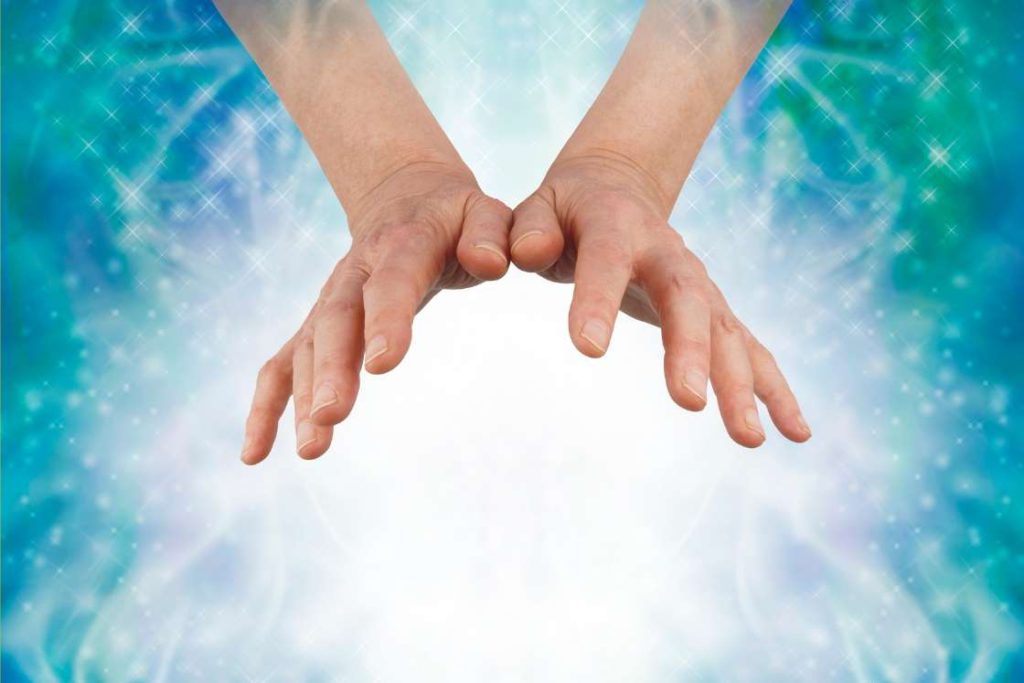
The three important sources of prana are the solar, earth, and cosmos. Prana from these sources referred to as common prana and we get it in numerous varieties like meals, air, water, and daylight. Nevertheless, it’s stated, holy locations, expertise, contemplation on the supreme self additionally improve the Prana degree of the physique.
Whether or not you’re looking by eyes, respiration by the nostril, sensing by the pores and skin, or ready to consider an occasion – Prana is working behind each delicate mechanism of the physique.
In keeping with Hindu philosophy, in our physique, Prana is alleged to the companion of Atman, the soul. Prana lies with the soul on the coronary heart middle. The soul is the silent experiencer that perceives the bodily world by the working of Prana; it enters and leaves the physique with the Prana.
Earlier than the bodily physique or thoughts begins to develop in an embryo within the mom’s womb, firstly soul comes into it and with the soul, Prana comes. Then pranic pressure (prana-shakti) combines the 5 parts to create the thoughts, senses, and the physique. On this means, prana is superior to the physique & thoughts, and getting management of Prana provides one management over the thoughts as effectively.
Additionally Learn: Panch Tatva: 5 Parts of Physique
As talked about in a examine from “Institute for Consciousness Analysis, researchers stated;
Our thoughts is ready to suppose, focus, meditate, recite a mantra, or soften in devotion solely with the assistance of ‘prana-shakti’, in the identical means because the Energy to create the universe resting in Shiva is solely the end result of his Shakti.
How Prana Flows?
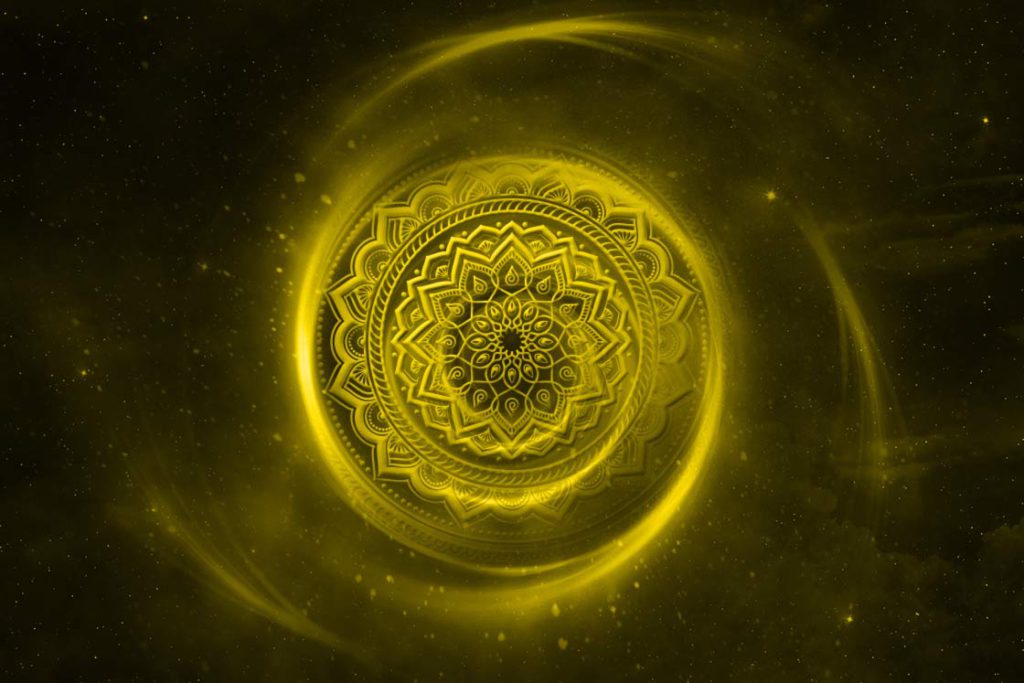
Our physique is a fancy system of organs and with a purpose to ensure that its correct functioning, the fixed movement of prana is essential.
Prana flows within the physique by delicate vitality channels which in yogic terminology referred to as the Nadis. The Nadis system is pervaded in all the physique in such a means that each one the minor Nadis are linked from the three important Nadis Ida, Pingala, and Sushumna. These 3 important nadis lies within the delicate physique alongside the spinal wire.
Additionally Learn: The Three Predominant Nadis: Ida, Pingala, Sushumna
The place Ida and Pingala Nadi crisscross one another, at these factors it meets with Sushumna Nadi, the central vitality channel. And this manner, this level of cross-section varieties vitality facilities i.e. 7 chakras.
When Prana flows by Nadis, then it’s the work of Chakras to distribute it to different minor Nadis which might be unfold over the entire physique. As quickly as a chakra is totally stuffed up with Prana, it begins directing prana shakti in all potential instructions by revolving on its axis. It’s referred to as a balanced chakra when Prana is flowing by it in a balanced method.
Prana flows within the type of Vayus
Yogis when noticed the capabilities, depth, and course of flowing Prana within the Nadis, they discovered within the totally different area of the physique, Prana act otherwise. It isn’t the identical all through all the physique. For instance, in some areas, the course of movement of Prana is upward (in chest, throat) whereas in different areas, it strikes downwards.
To be able to perceive Prana extra precisely, yogis divided Prana into 5 vayus.
What are Vayus?
The motion or the movement of prana known as the Vayu. Vayu actually interprets as ‘Wind’. Just like the wind is a pressure behind transferring objects, Prana takes motion within the physique within the type of Vayu.
Based mostly on the movement of Prana in a selected area of the physique, Prana could be divided into 5 vayus named Prana Vayu, Apana Vayu, Samana Vayu, Udana Vayu, and Vyana Vayu. These 5 are the most important division of ‘Prana’ combinedly referred to as the Pancha Pranas.
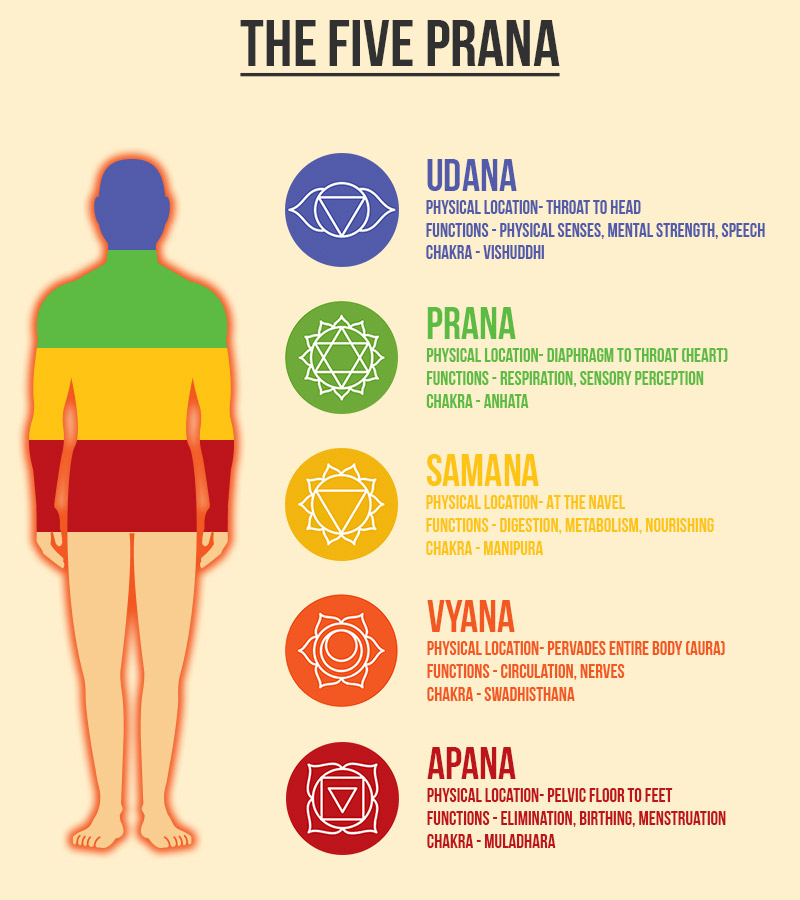
1. Prana Vayu
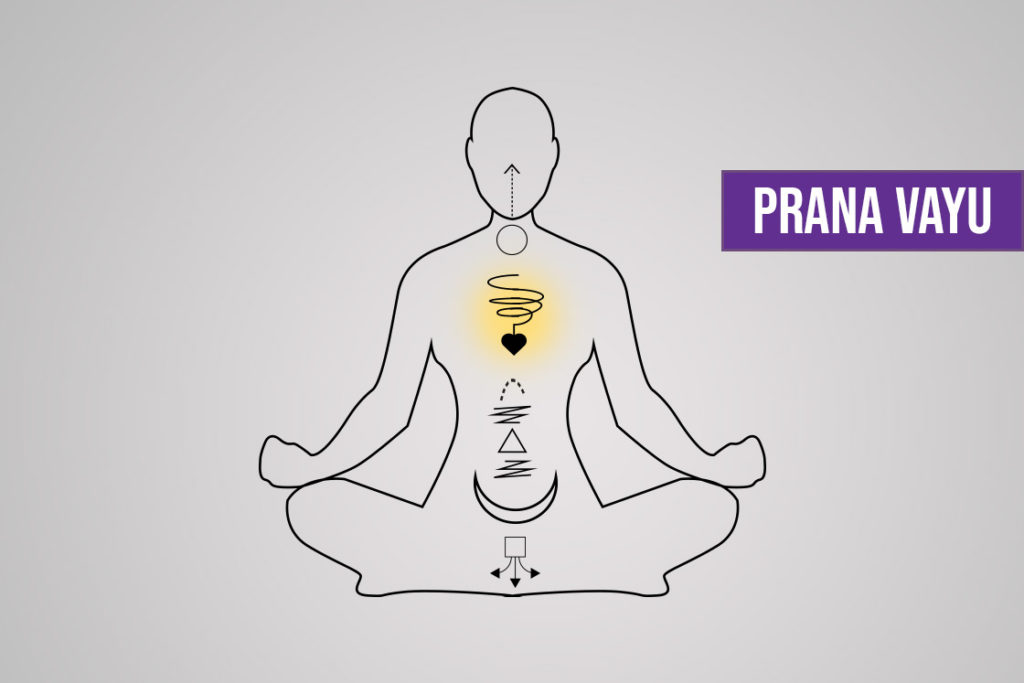
The primary and most vital kind of Prana is prana vayu (To differentiate Prana from prana vayu, Prana known as Mahaprana). The movement of this vayu usually occurs inwardly and upward course.
On the bodily degree, prana vayu is accountable for the working of the respiratory system together with the pumping of the guts, main inhalation-exhalation course of. Apart from this, it additionally helps in swallowing and regurgitation meals. It balances some physiological & psychological actions like eye-concentration, feelings & psychological consistency.
The guts chakra is alleged the principle seat of this vayu. Subsequently imbalance within the amount or a blockage in prana vayu can result in despair, low-feeling & heart-related issues.
Additionally learn: Prana mudra to stability prana vayu
Poses To Steadiness Prana Vayu
To stability the prana vayu one can apply the Asana during which the chest area is concerned majorly. Some examples of asana to stability prana vayu, are standing Cobra, bridge pose, bow pose & camel pose.
2. Apana Vayu
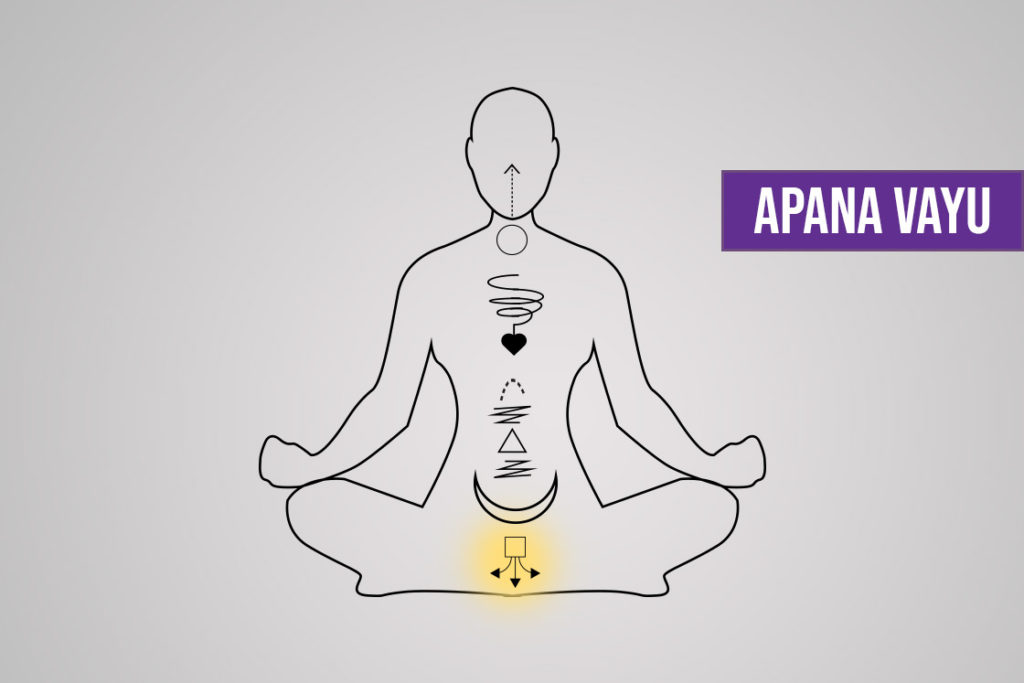
Apana Vayu flows in the wrong way of prana vayu, i.e., within the downward course. Typically, pranayama is aimed to redirect Apana Vayu to the upper vitality centres and limit its pointless movement out of the physique. Its location is in Muladhara Chakra.
The primary operate of Apana Vayu is the elimination of waste as feces, fuel, and urine. On the time of childbirth, Apana Vayu helps to create a clean passageway for supply. Apart from this, Apana Vayu can also be accountable for sexual stimulation, ejaculation & month-to-month menstrual cycle for ladies.
Main working space of apana vayu is core of the pelvic flooring and it regulates the organs that lies in between navel to the perineum like urinary system, reproductive system, kidneys & the big gut. An imbalance in Apana vayu can result in diabetes, abdomen associated issues from poor elimination to laziness, tiredness, itching, despair and negativity.
Additionally learn: Apana vayu mudra for coronary heart
Poses To Steadiness Apana Vayu
To stability apana vayu, one ought to deal with the poses which domesticate consciousness close to the basis chakra, For instance – Tree Pose, Sure Angle Pose, Locust Pose, and so on.
3. Samana Vayu
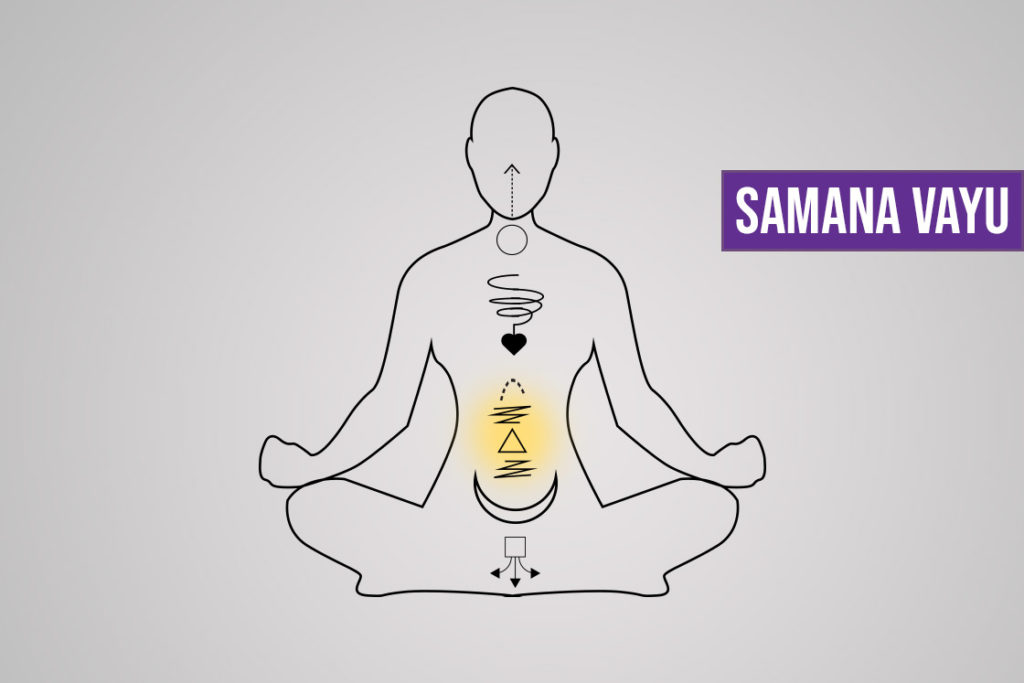
Samana means ‘equal’ (Equal within the sense of ‘Balancing’). It occupied between the working areas of prana & Apana Vayu. It hasn’t any motion in an upward or downward course, but it surely works solely within the navel area. Samana vayu focuses on the ‘hearth ingredient’ of the physique and therefore, stimulates Manipura Chakra.
It’s accountable for vitality utilized within the digestion course of and dealing of digestive organs just like the abdomen, liver, giant gut. Samana vayu is each heating and cooling in nature which regulates the digestion course of.
An imbalance of Samana Vayu can disturb the urge for food of an individual which brings weak spot within the physique. Furthermore, it impacts metabolism deficiency within the physique.
Additionally learn: Samana mudra for digestion
Poses To Steadiness Samana Vayu
Poses that creates extension or contraction within the navel area are good to stability the samana vayu. For instance, Boat pose, Seated ahead bend pose, and so on.
4. Udana Vayu
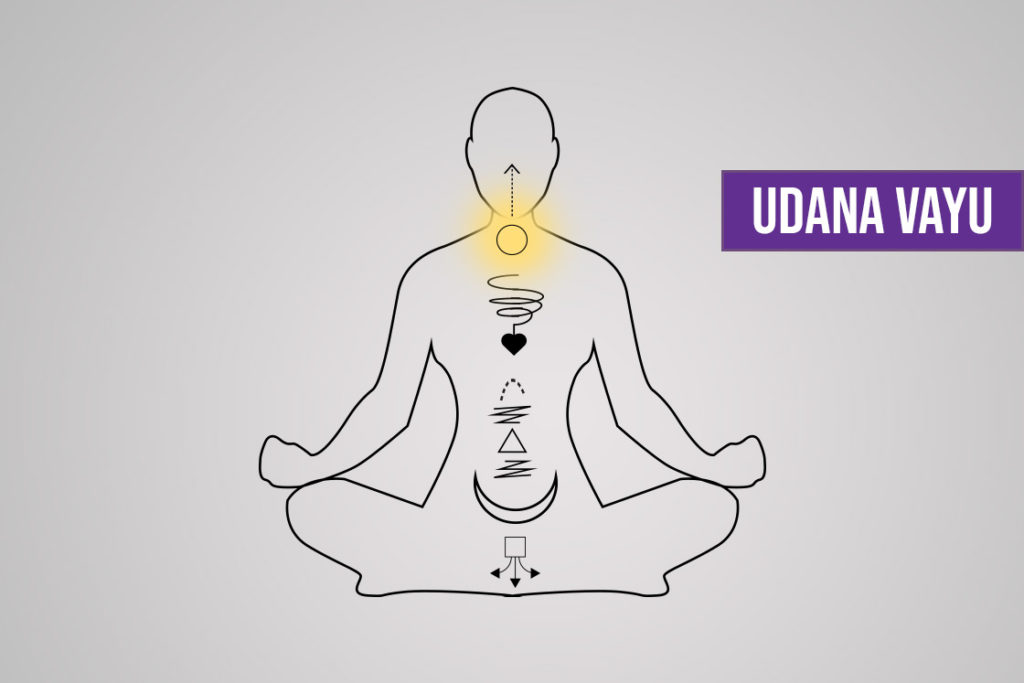
Udana means ‘Fly’ (fly in sense motion). With the assistance of Udana Vayu solely, you may transfer the totally different organs of the physique.
For instance – Transferring or rolling the hand by the shoulder, rounding the top & kicking by legs. All these potential due to Udana Vayu. This important vitality lies within the vishuddha chakra (Throat) and limbs above it.
On the bodily degree, Udana Vayu coordinates the neurons of the motor & sensory nervous system. This coordination helps within the correct motion of various organs of the physique. Apart from this, controlling the 5 bodily senses are additionally dealt with by Udana Vayu.
Udana Vayu works within the different-different areas of the physique. It resides between neck to go half, shoulder to fingertips (arms) & hips to the toe suggestions (legs). The deficiency of Udana Vayu could make an individual paralyzed. Senses of the physique received’t work accurately & it will probably result in imaginative and prescient issues and deafness.
Additionally learn: Udana mudra to stability udana vayu
Poses To Steadiness Udana Vayu
Poses that brings consciousness to the shoulder and head area are finest to stability the udana vayu within the physique, For Instance, Bridge Pose, Shoulder Stand, Plow Pose, Fish Pose, and so on.
5. Vyana Vayu
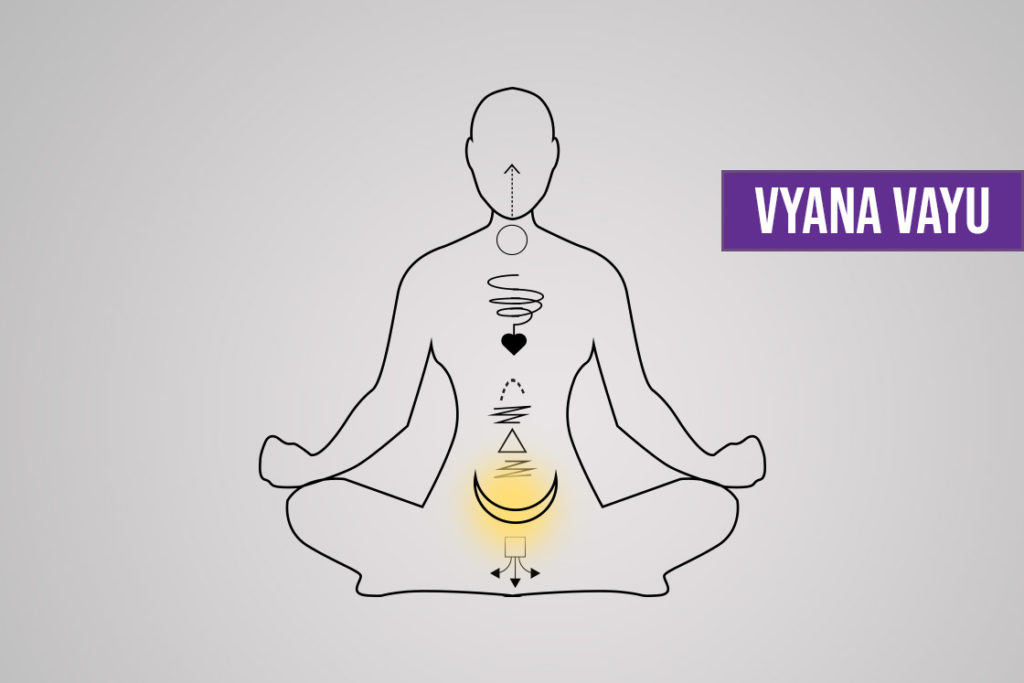
Vyana is the fifth and most built-in kind of prana. The primary operate of vyana vayu is to facilitate reserve pressure into the poor space of different pranas. It offers vital vitamins to wanted organs through blood movement.
In contrast to the opposite 4 pranas, vyana vayu has no particular space working space within the physique because it travels throughout the entire physique & thoughts by the circulatory system.
An imbalance in Vyana vayu can result in lack of coordination between sensory and motor neurons. It could additional leads to weak muscular actions or tight muscle tissue. Additionally, by deficiency of this vayu, the physique begins sweating lots and sudden horripilation by worry turns into a really recognized phenomenon.
Additionally learn: Vyana mudra for hypertension
Poses To Steadiness Vyana Vayu
Half-moon Pose and Eagle Pose could be practiced to redirect vyana vayu in a special a part of the physique.
Upaprana
Aside from the 5 main vayus, there are 5 minor pranas additionally, referred to as Upaprana. 5 upa pranas are Naga, Kurma, Krikala, Devdatta, and Dhananjaya.
At any time when there comes blockages in 5 important prana vayus, upa-pranas works to deliver that vayu in stability. Additionally, it’s accountable for routine actions like eye blinking, yawning, sneezing, or burping, and so on.
- Naga – Releases the fuel that causes blockage in Prana and Apana Vayu within the type of burping, vomit, hiccups, and so on.
- Kurma – This upa-prana controls the eyelid winking and retains eyes moisturize.
- Krikala – It induces sneezing to clear the blockages within the respiratory system.
- Devdatta – This up-prana releases the fuel within the type of Yawning. It balances samana vayu vitality by expelling the fuel after consuming.
- Dhananjaya – It regulates the opening and shutting of the guts valves and controls the fragmentation of a physique after demise.
5 Prana Vayus Chart
| 5 Pranas | Location | Perform | Path of Stream | Chakra | Component |
|---|---|---|---|---|---|
| Prana Vayu | Chest, Eyebrows centre | Inspiration, swallowing meals | Upward | Coronary heart chakra | Air |
| Apana Vayu | Pelvis | Elimination, outward motion | Downward | Root Chakra | Earth |
| Samana Vayu | Navel | Assimilation | Round inward | Photo voltaic Plexus Chakra | Hearth |
| Udana Vayu | Thorat | Metabolizing, speech, bodily progress | Upward | Throat Chakra | Ether |
| Vyana Vayu | Complete physique | Circulation | All course | Sacral Chakra | Water |

